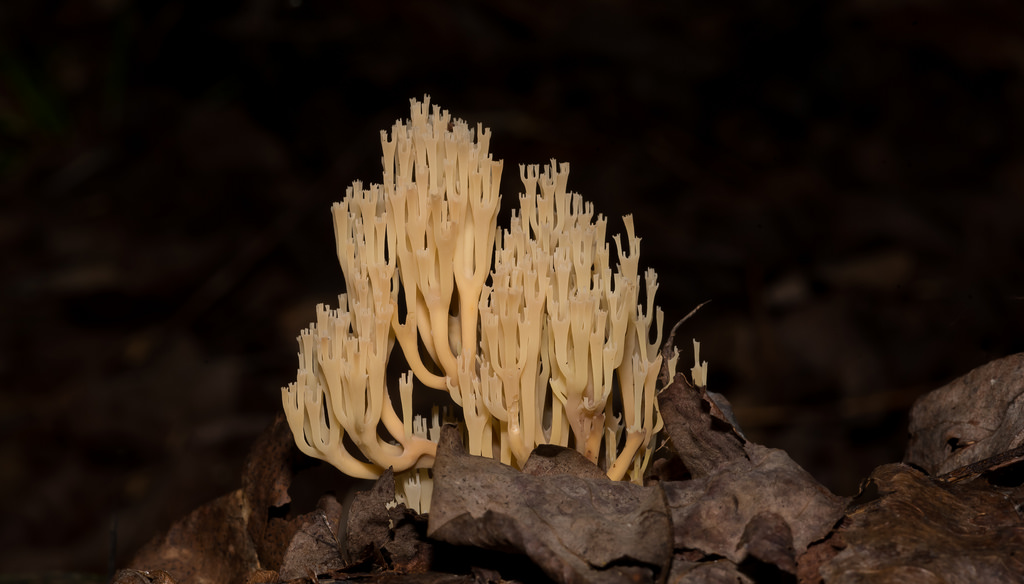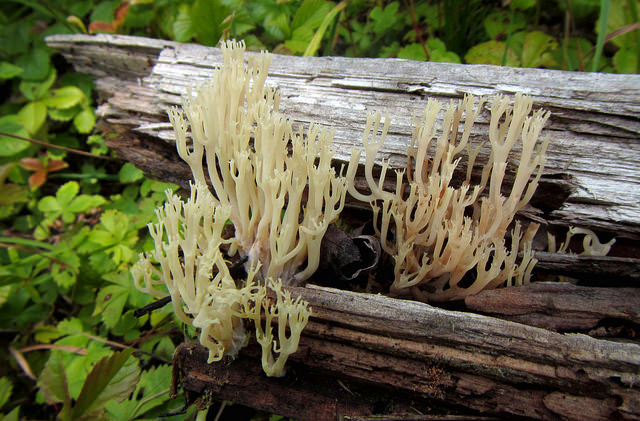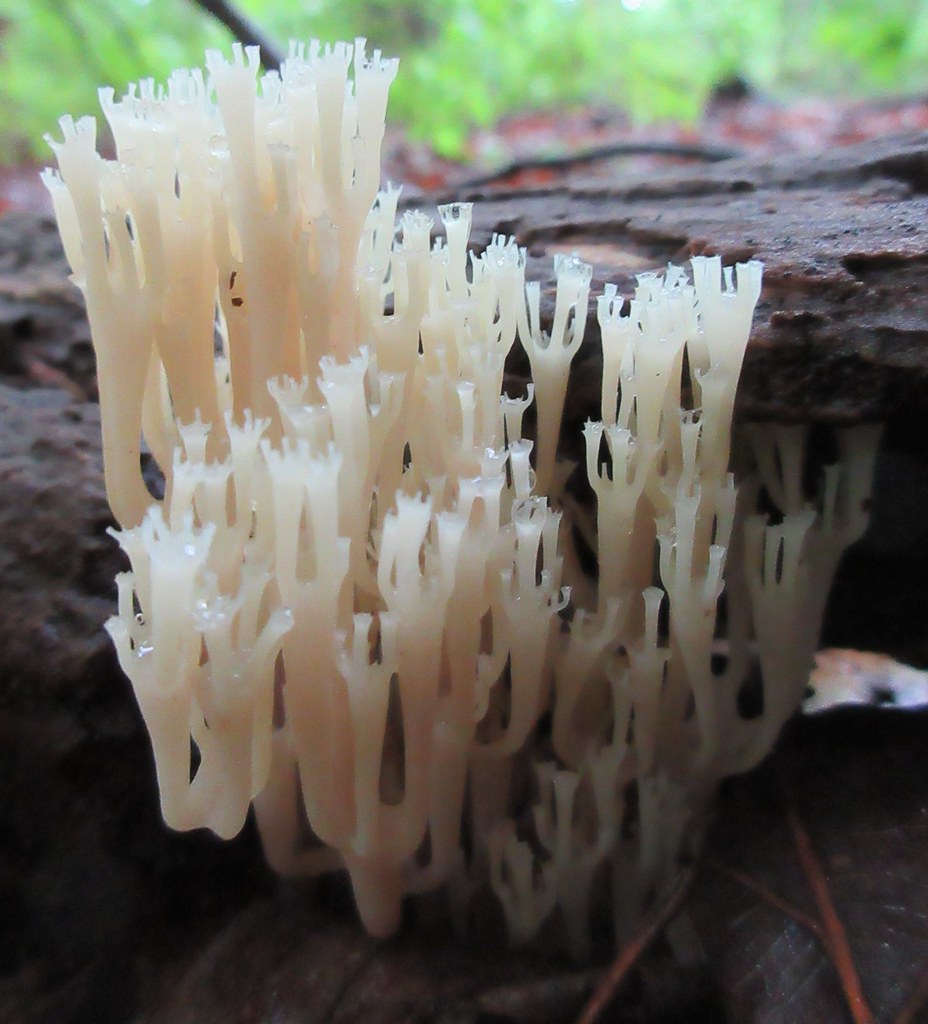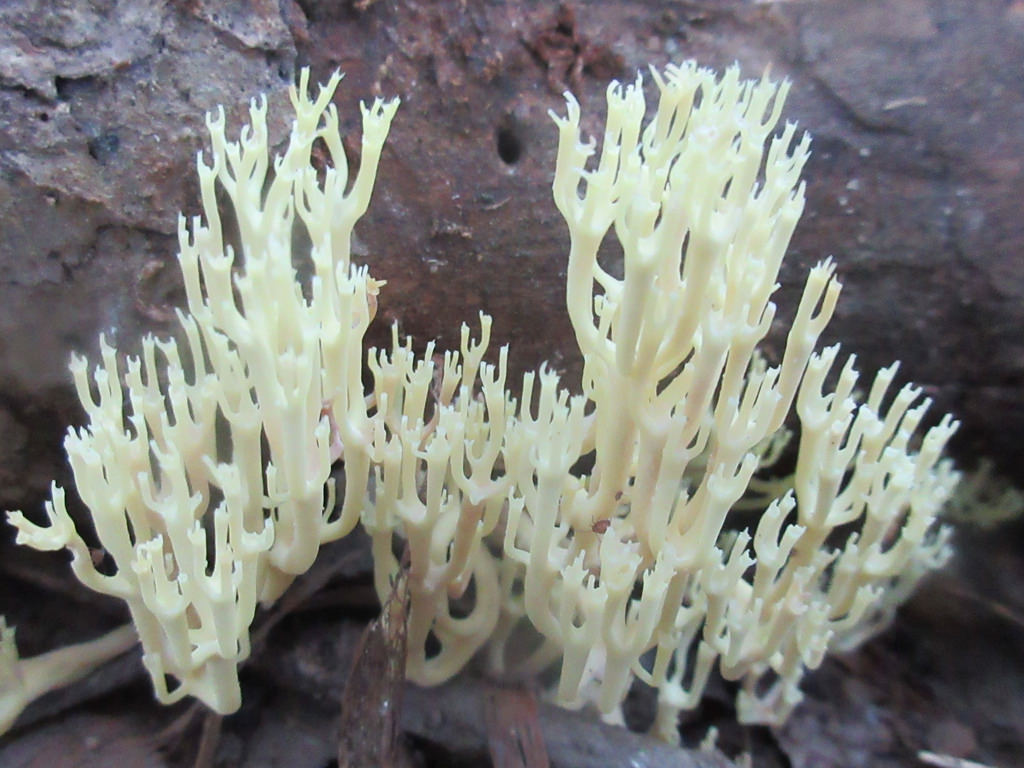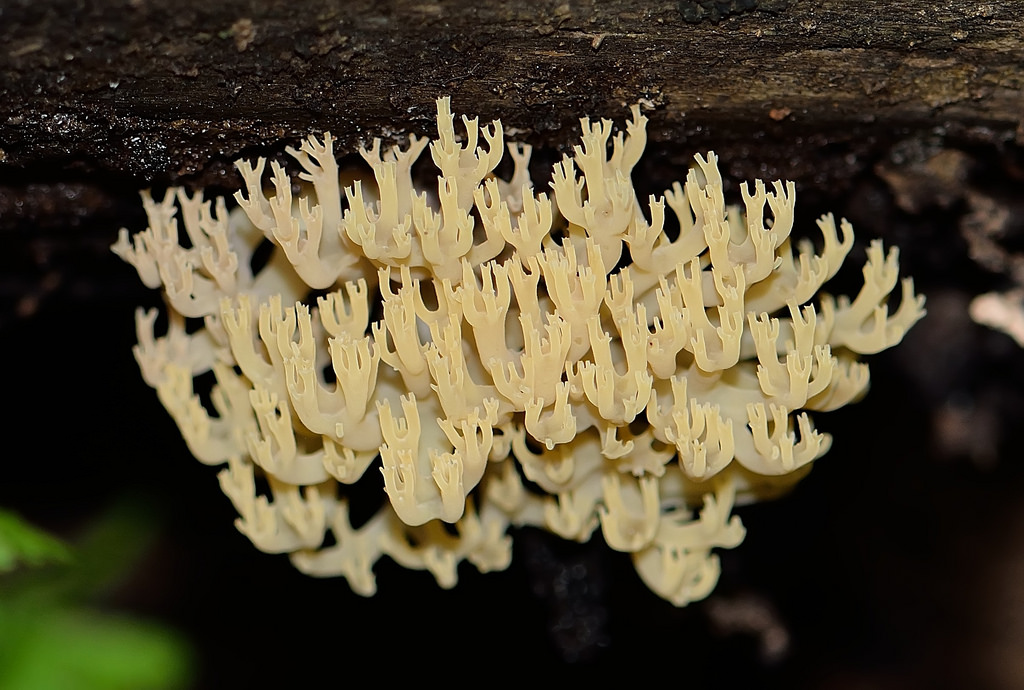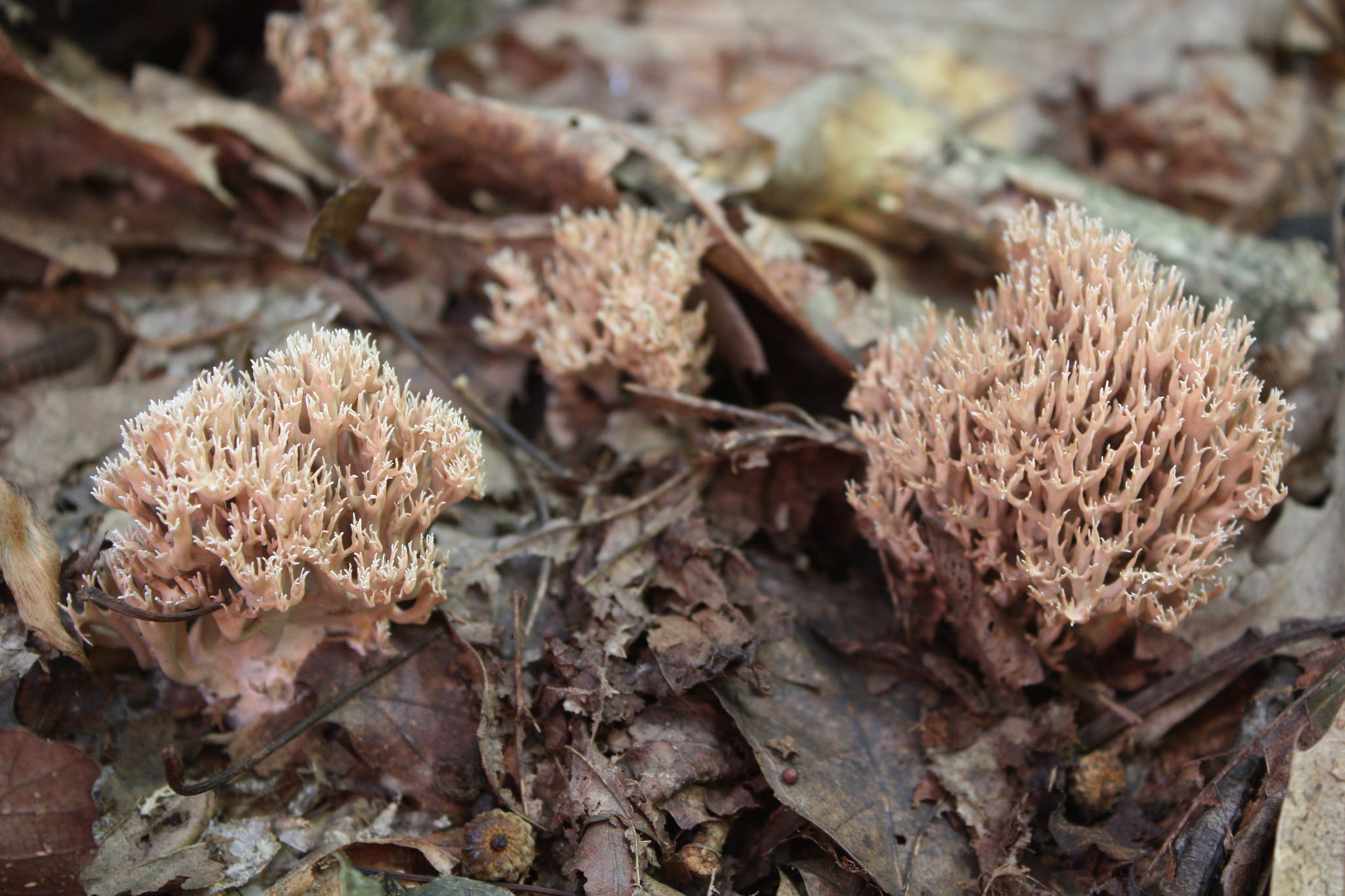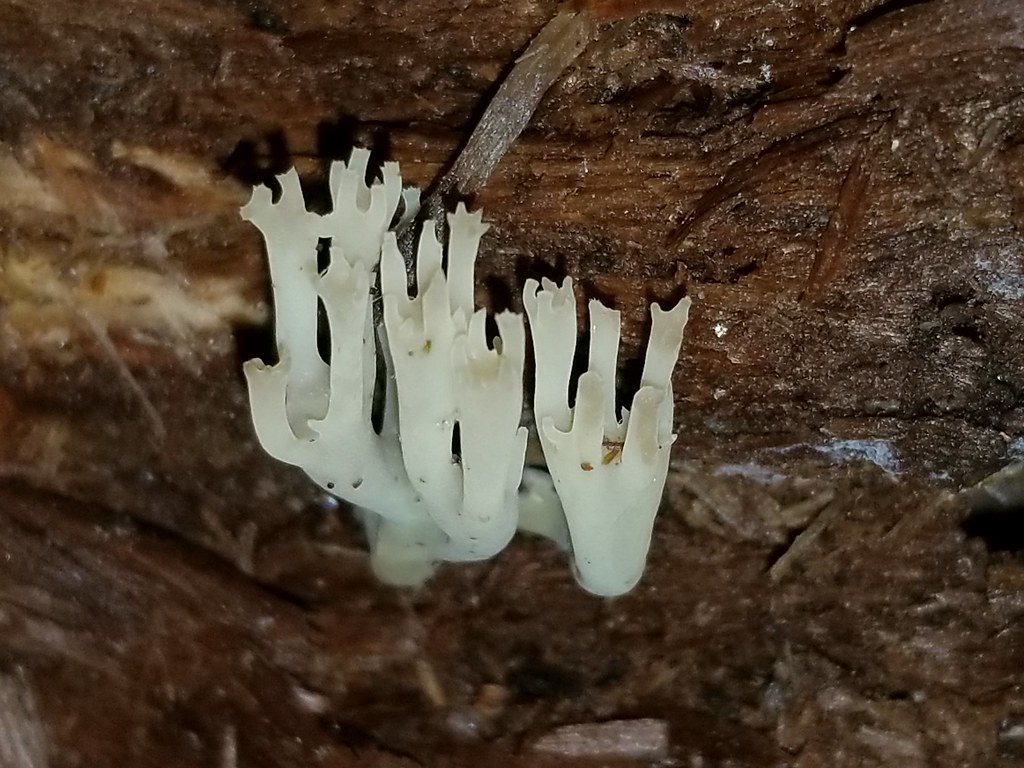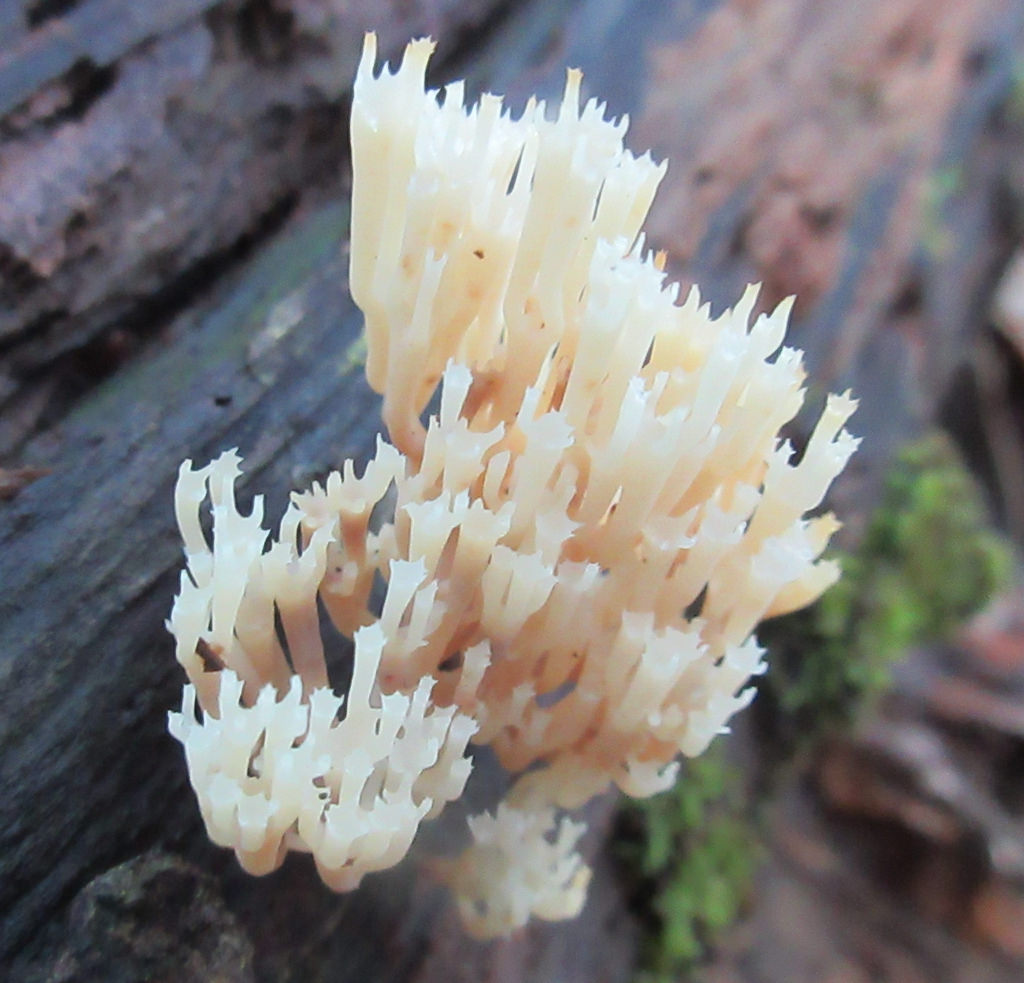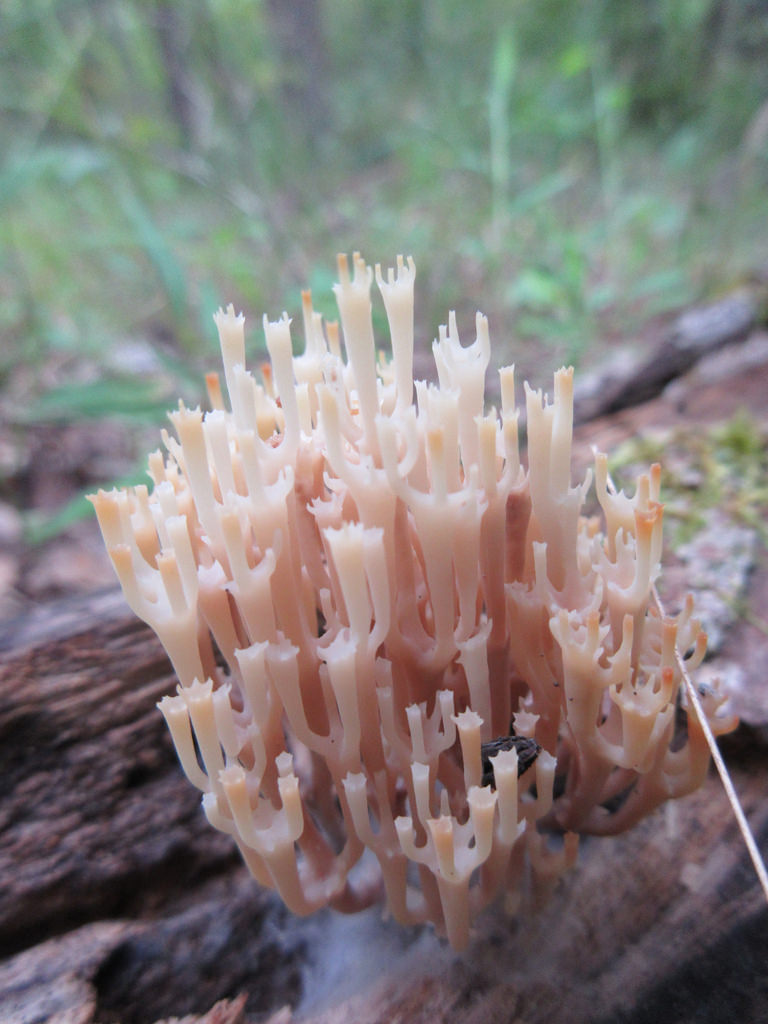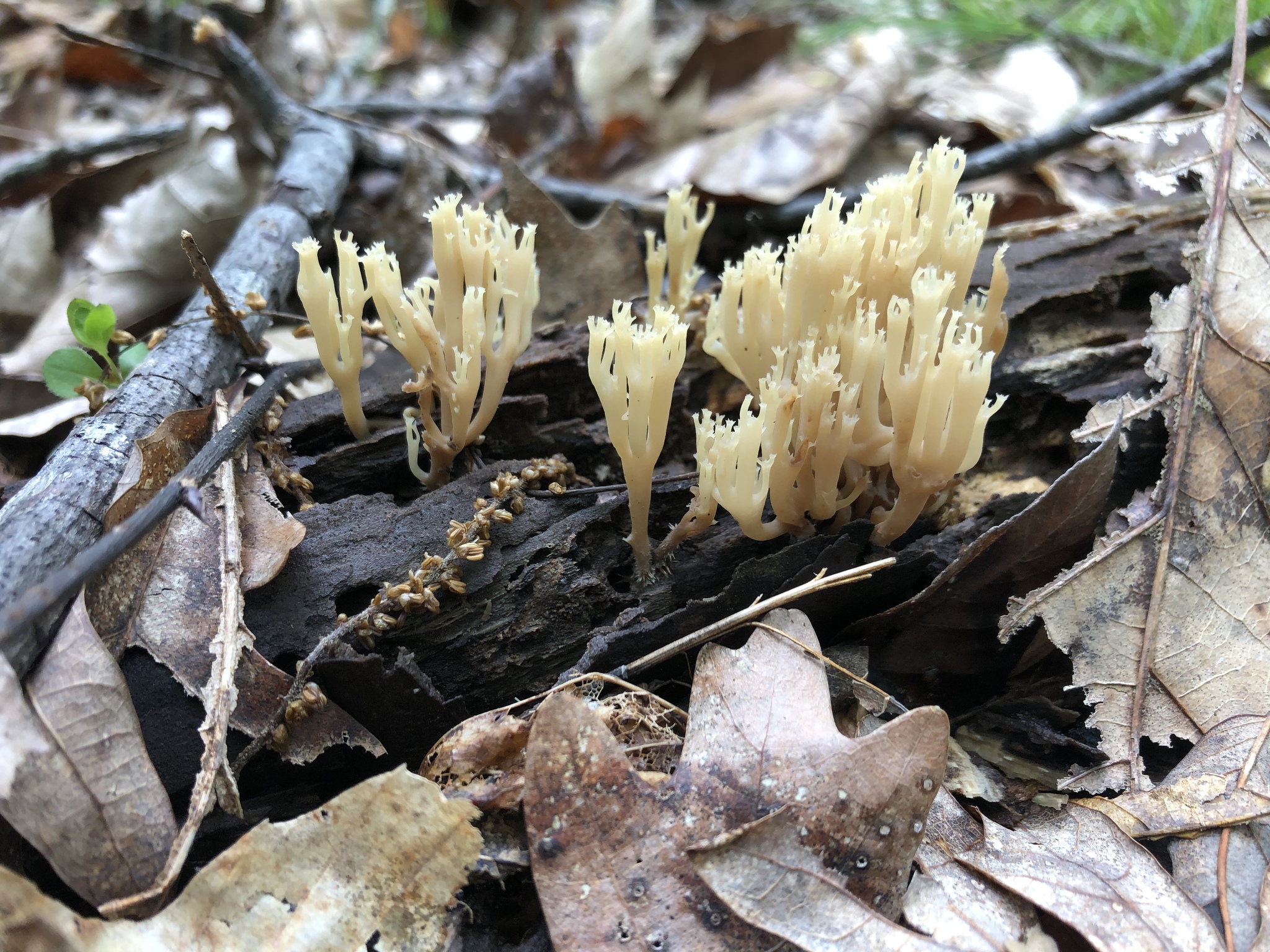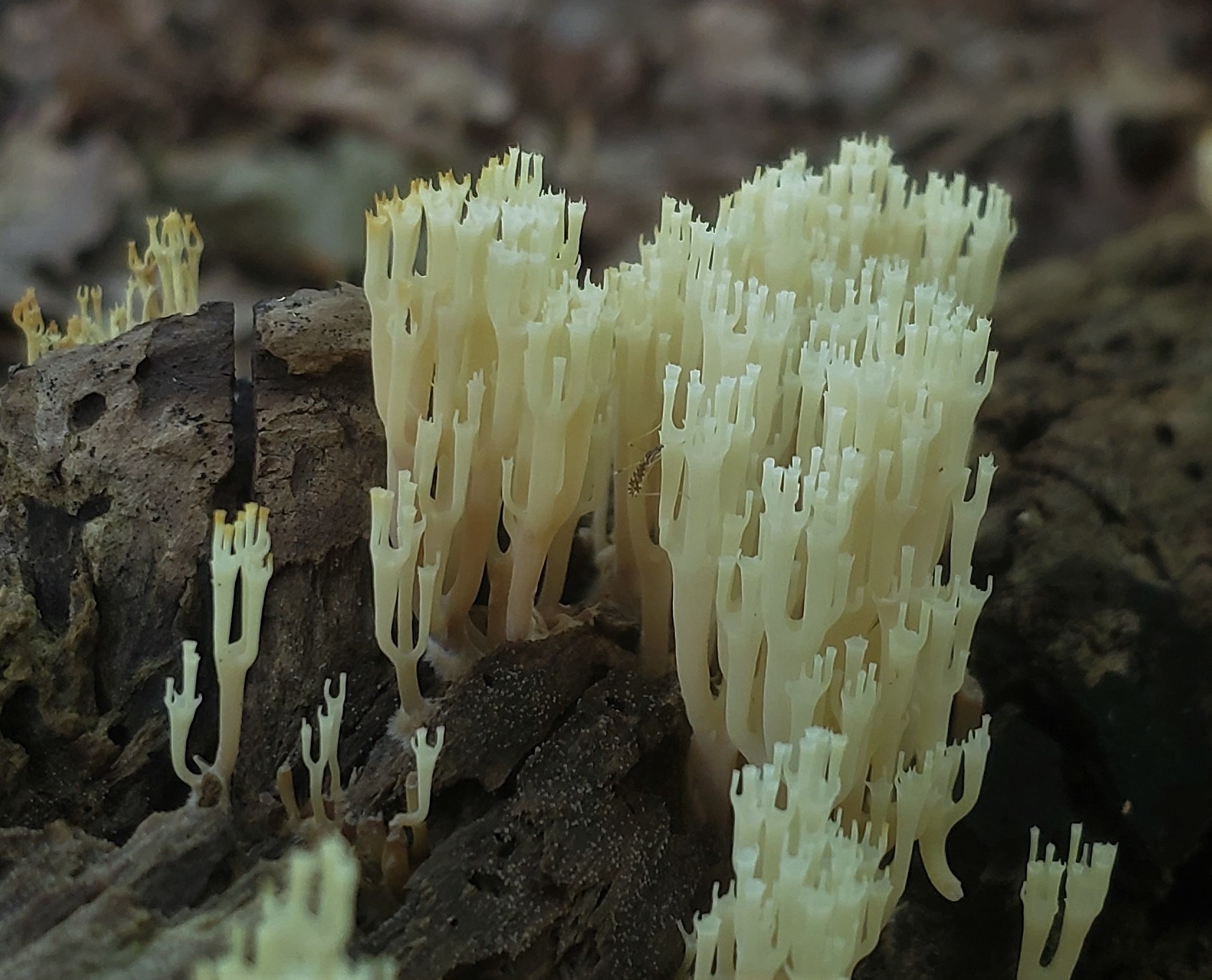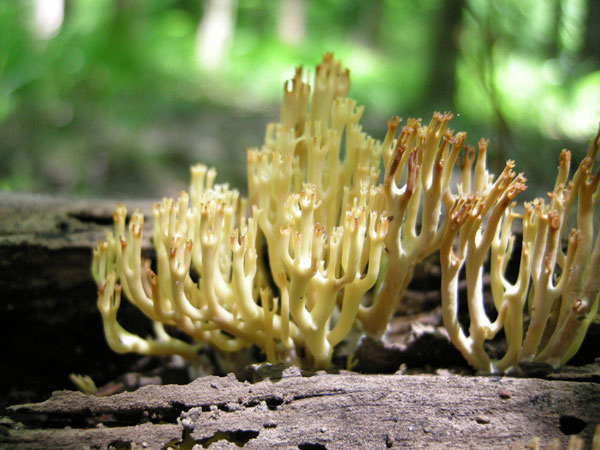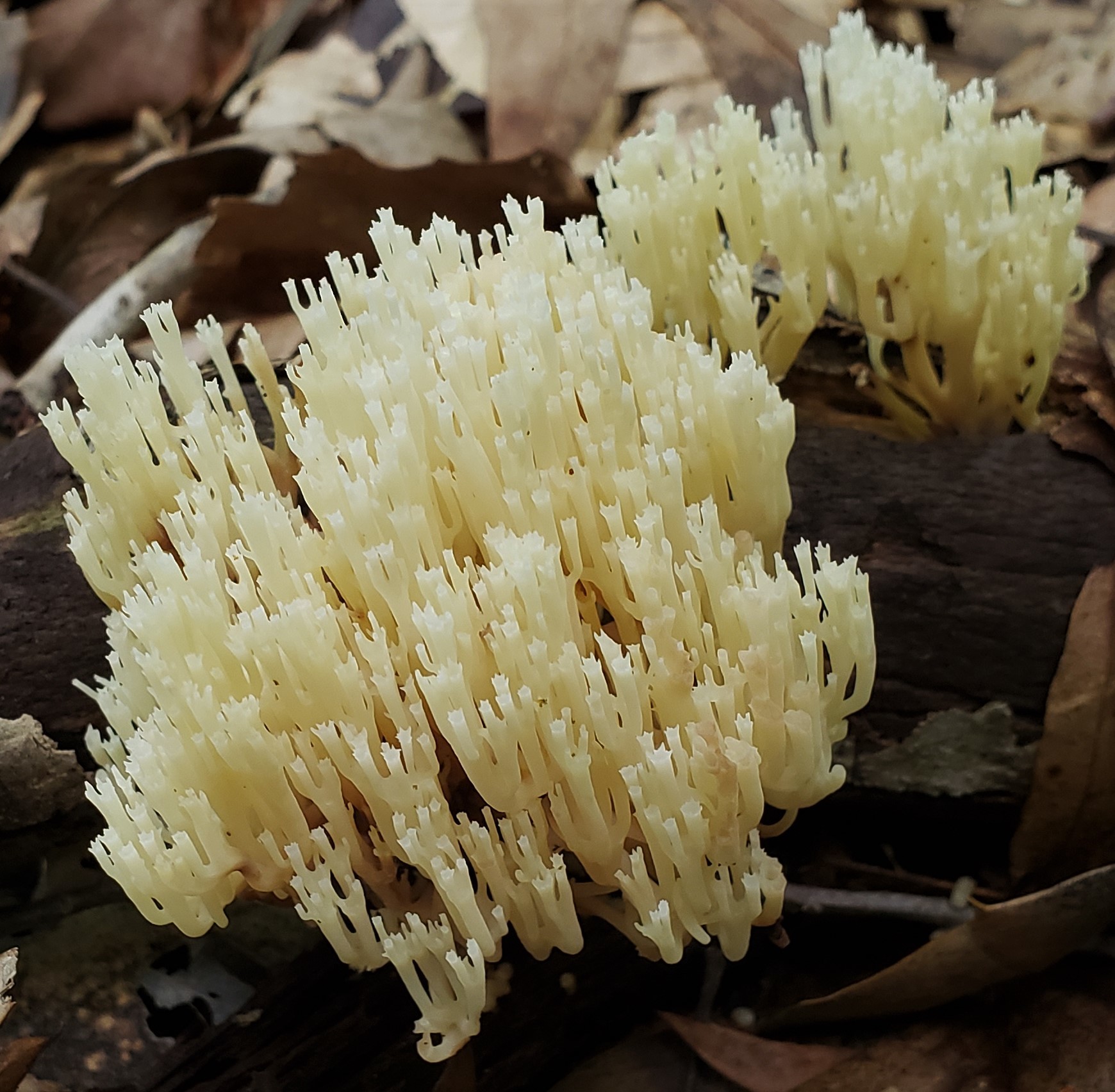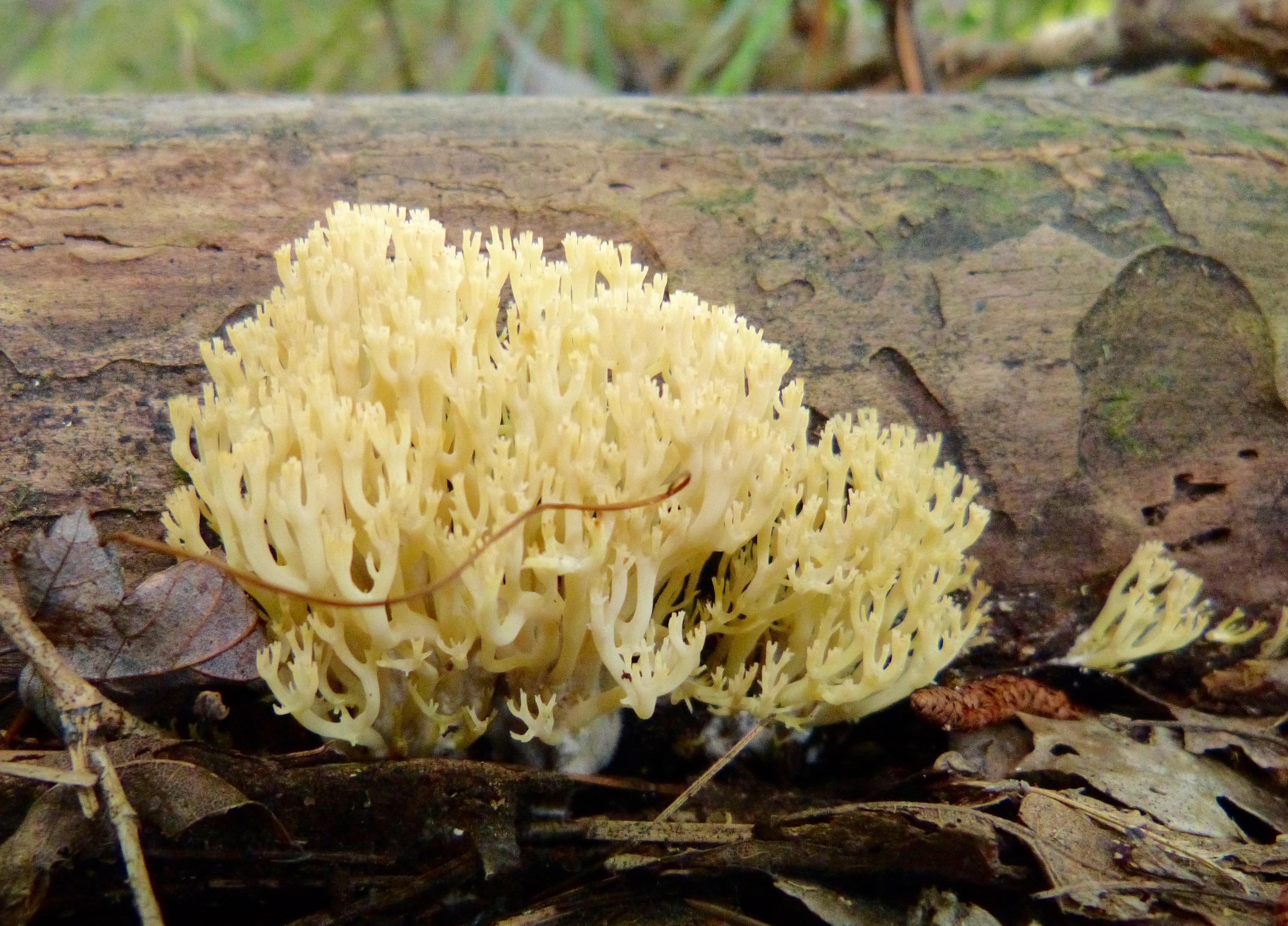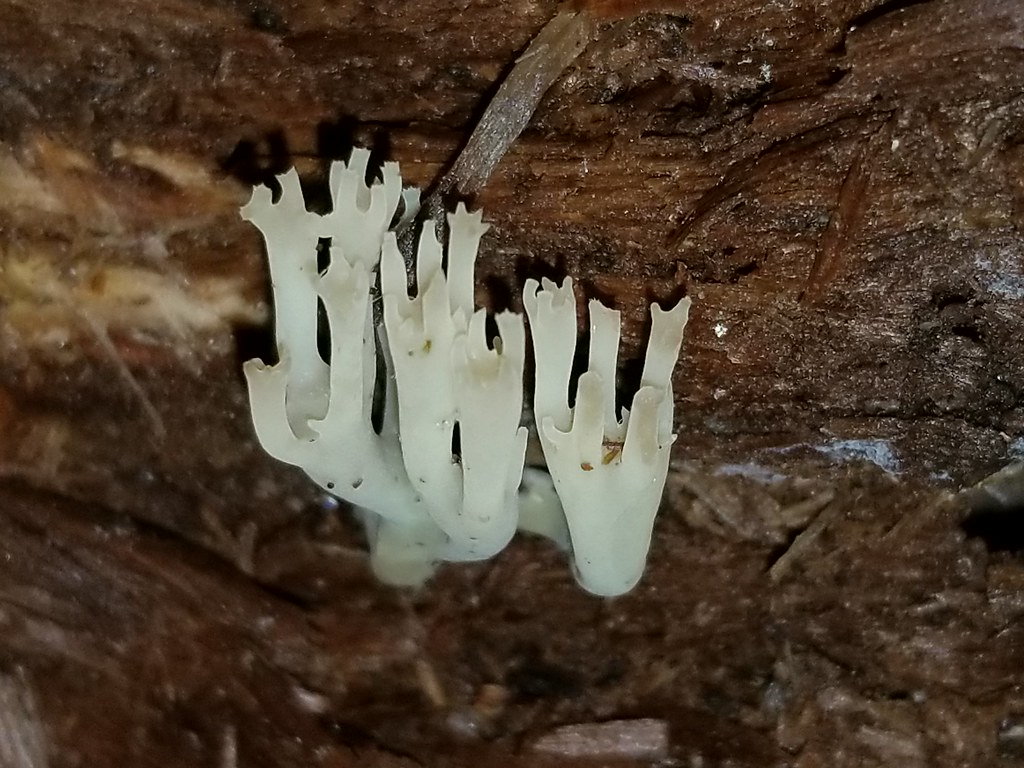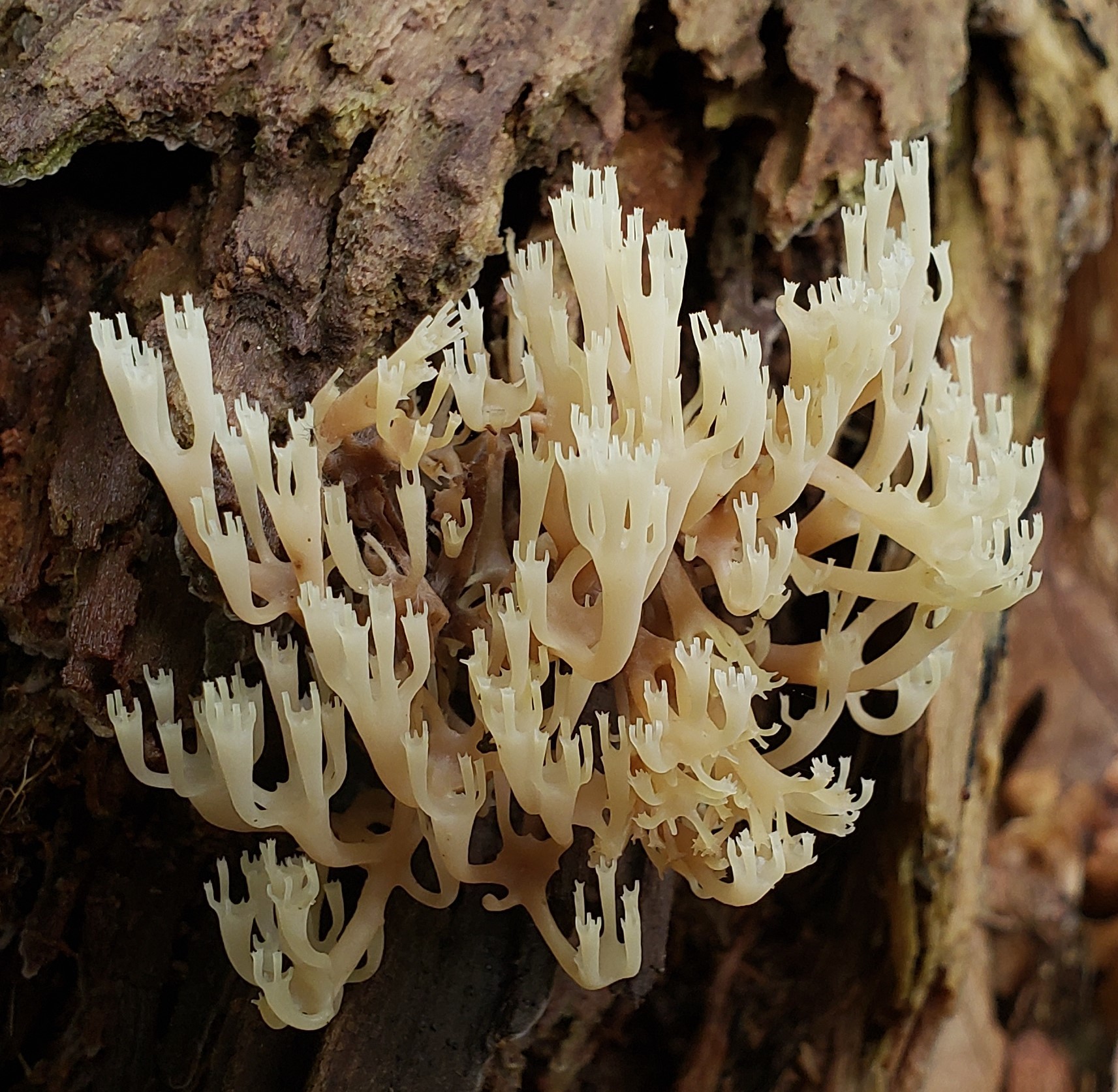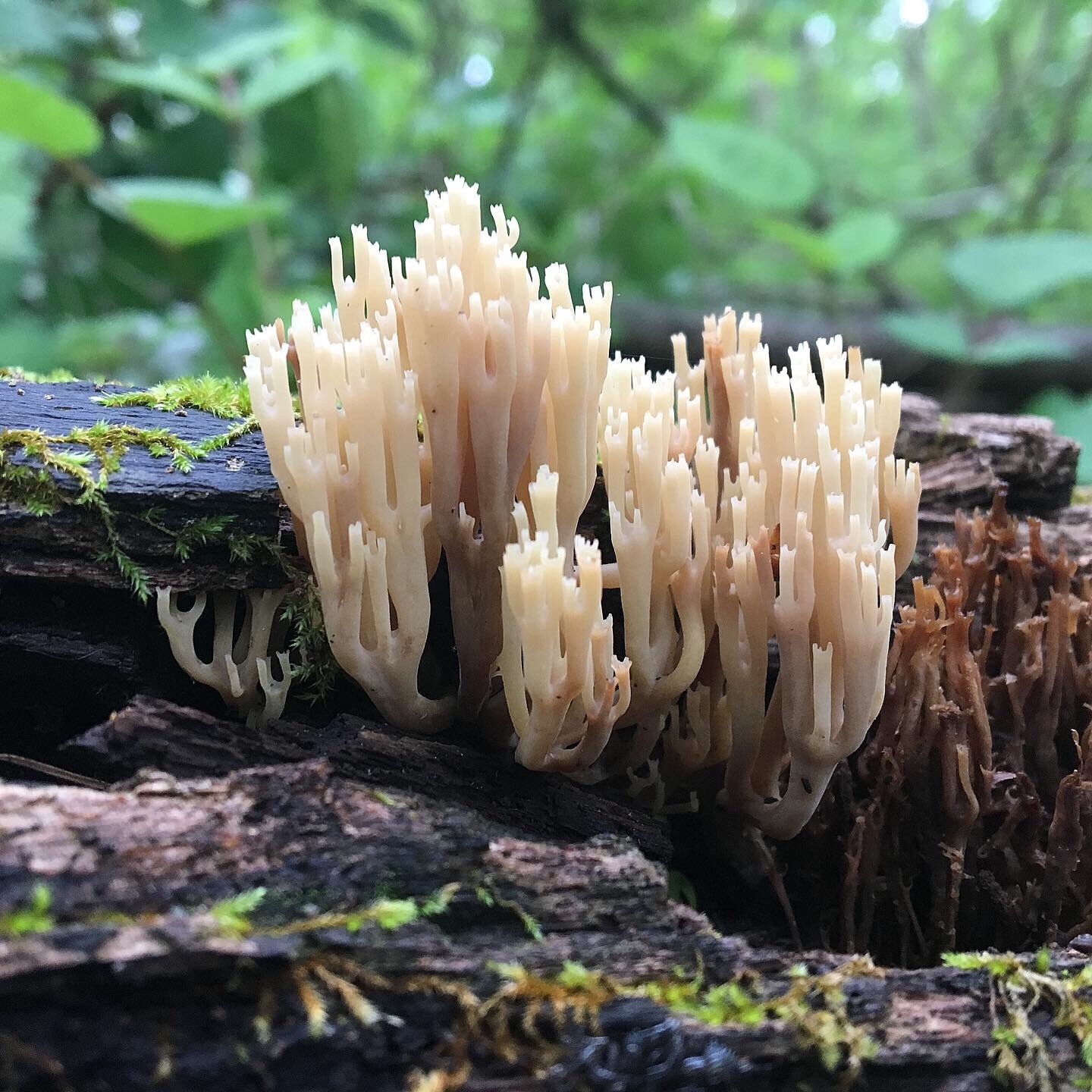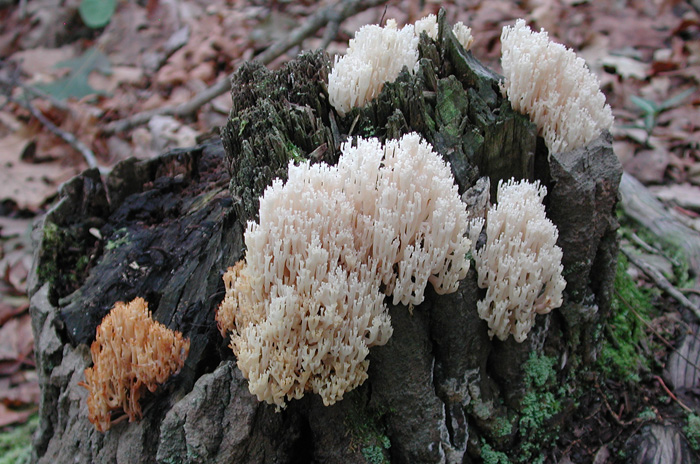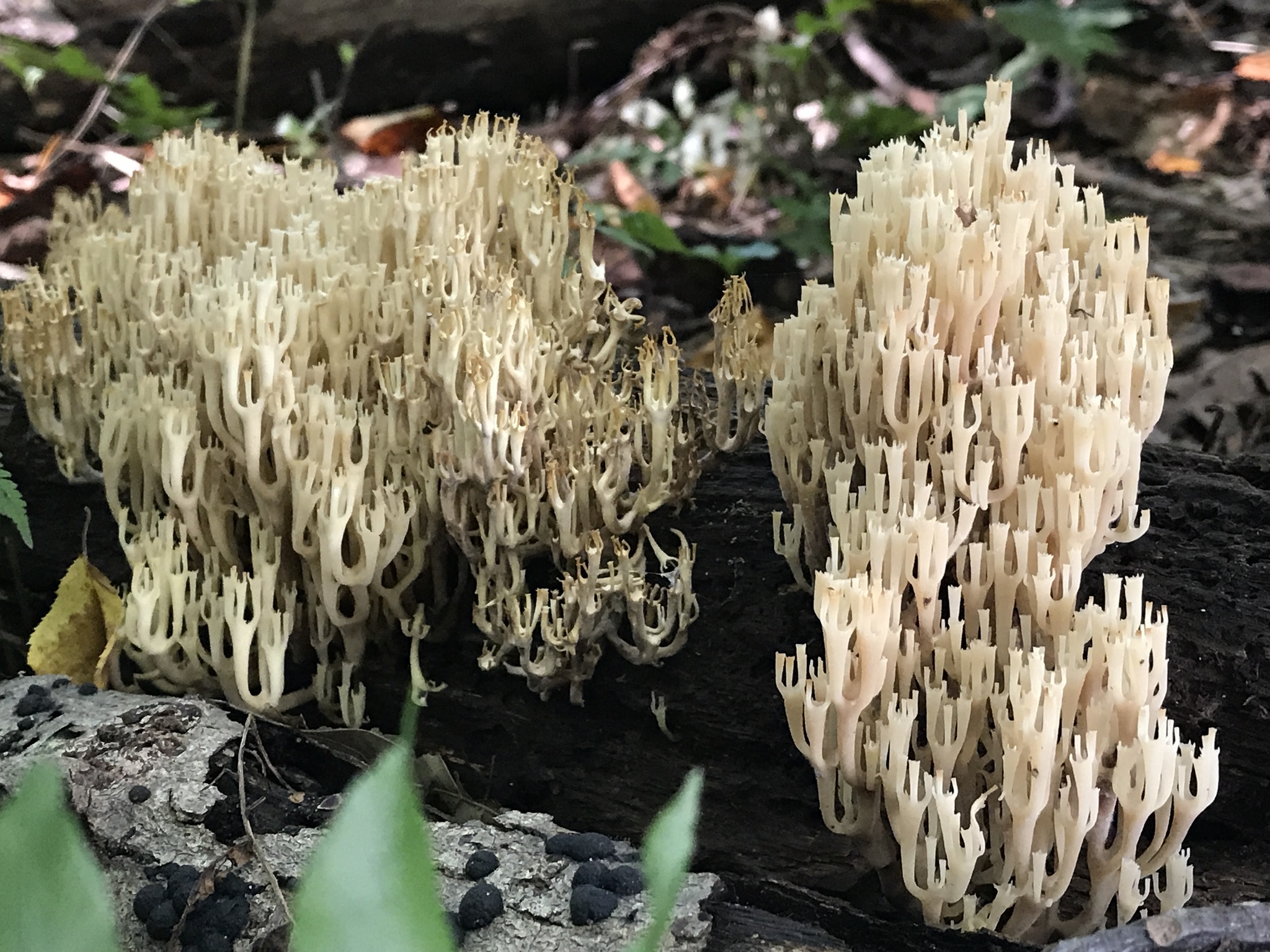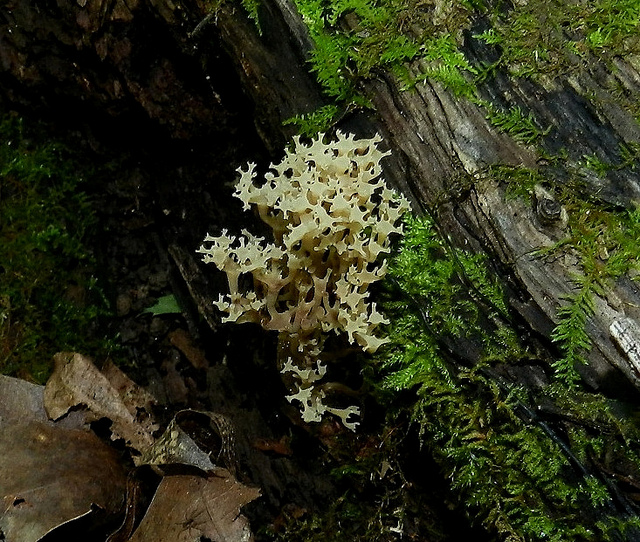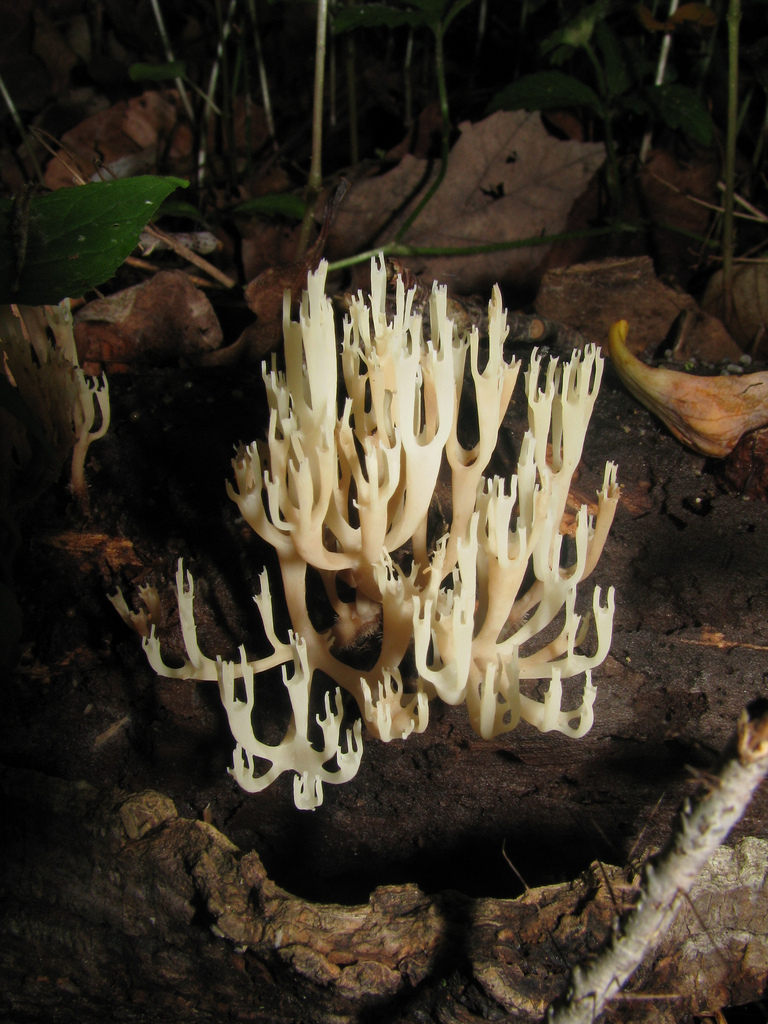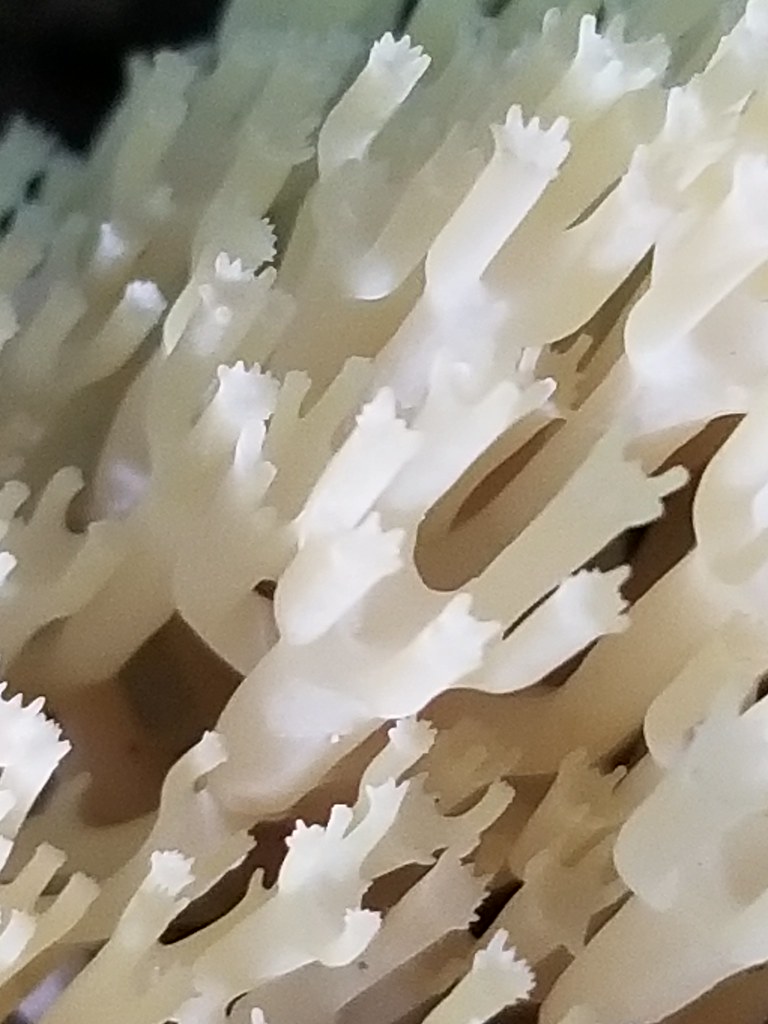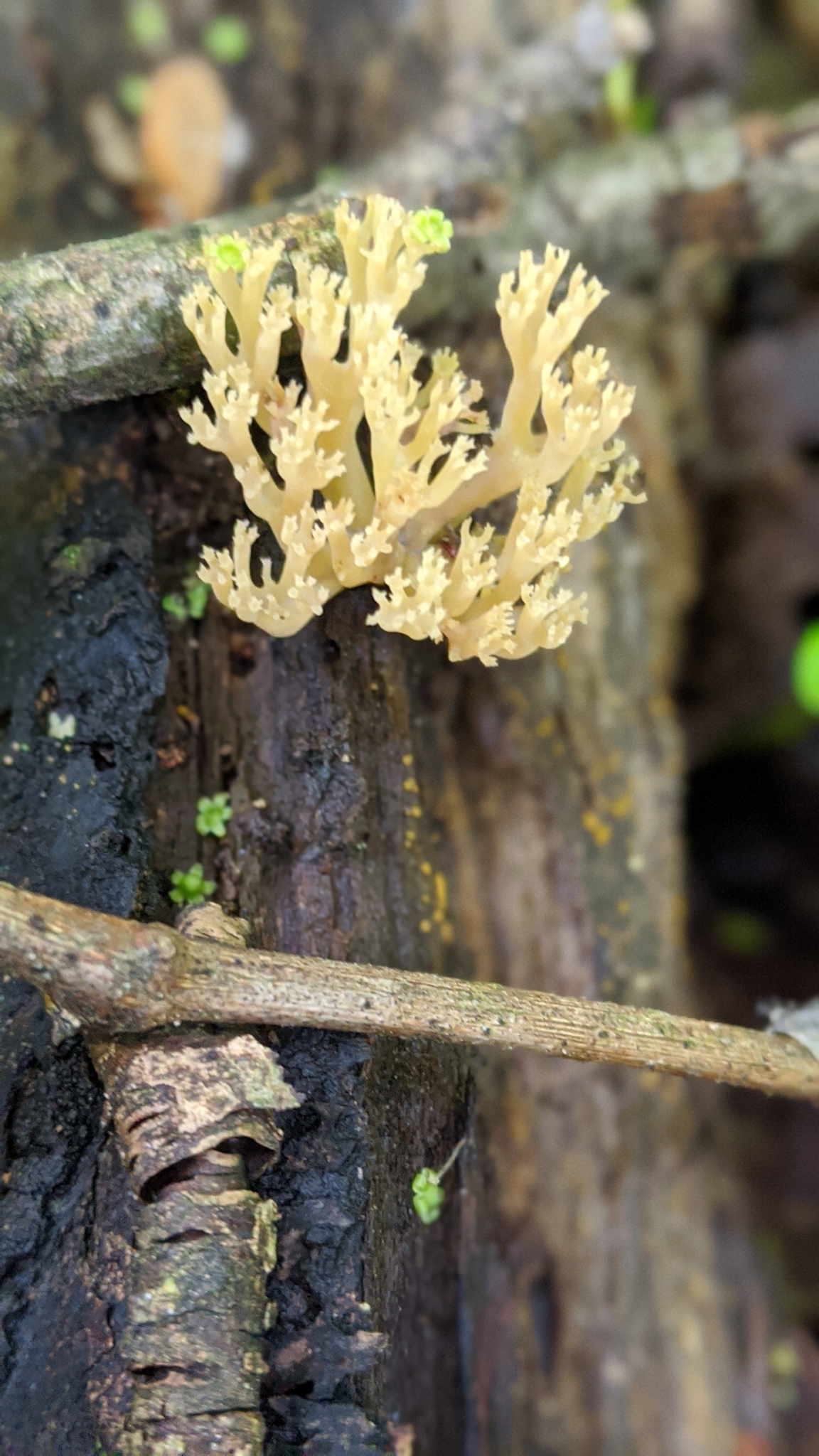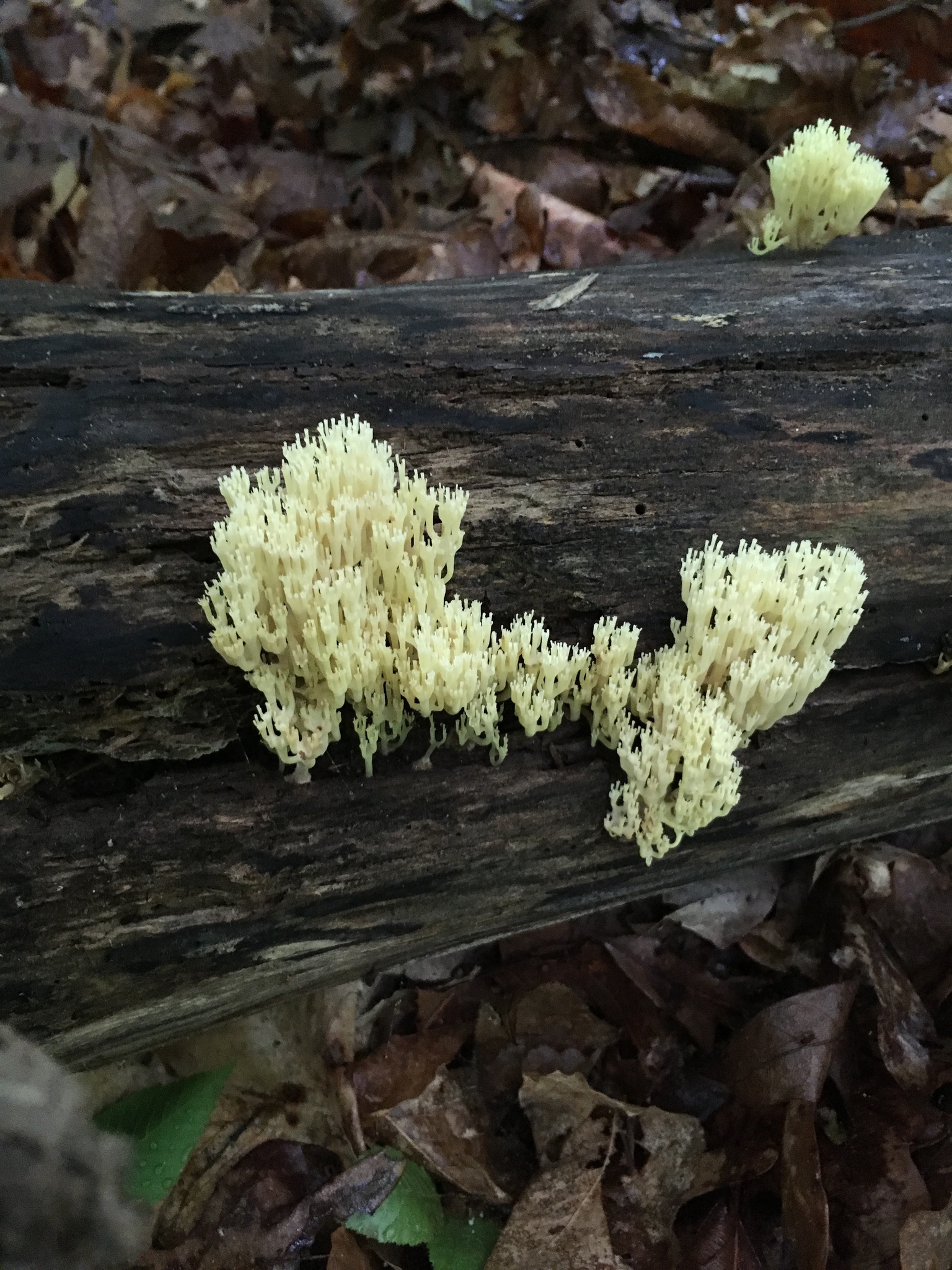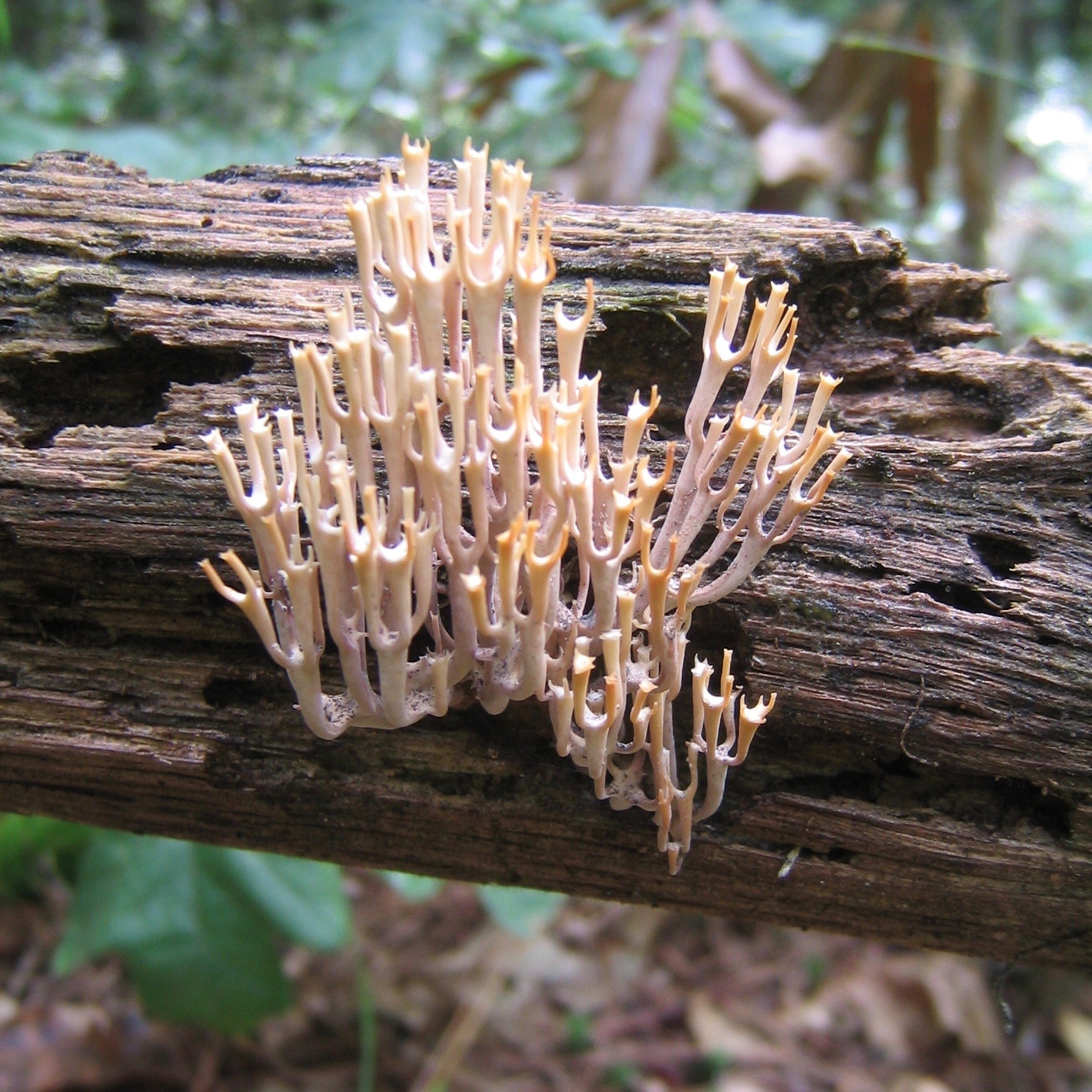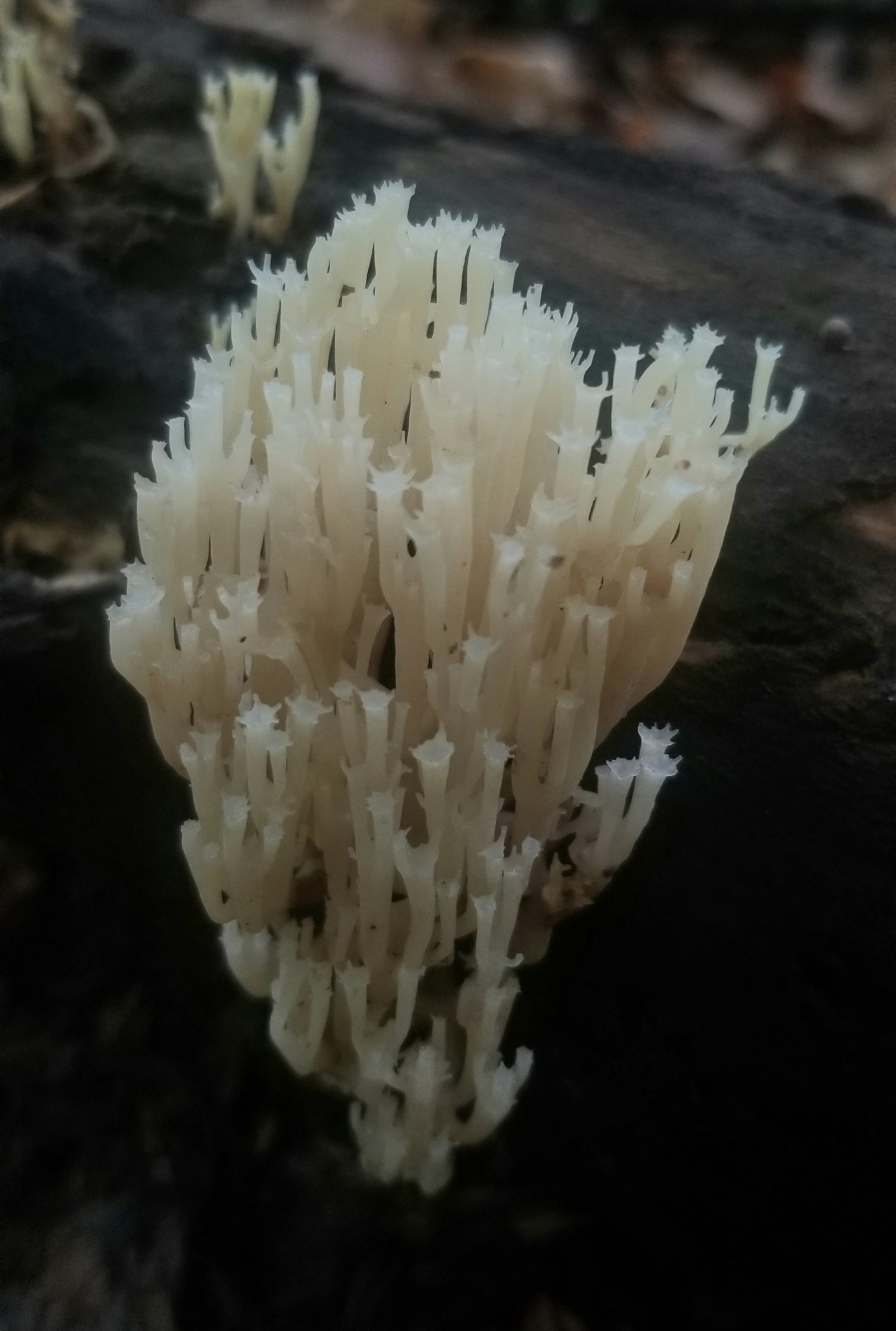Map Snapshot























315 Records
Seasonality Snapshot
Source: Wikipedia
| Artomyces pyxidatus | |
|---|---|

| |
| Scientific classification | |
| Domain: | Eukaryota |
| Kingdom: | Fungi |
| Division: | Basidiomycota |
| Class: | Agaricomycetes |
| Order: | Russulales |
| Family: | Auriscalpiaceae |
| Genus: | Artomyces |
| Species: | A. pyxidatus
|
| Binomial name | |
| Artomyces pyxidatus | |
| Synonyms[1] | |
| |
| Artomyces pyxidatus | |
|---|---|
| Smooth hymenium | |
| No distinct cap | |
| Hymenium attachment is irregular or not applicable | |
| Lacks a stipe | |
| Spore print is white | |
| Ecology is saprotrophic | |
| Edibility is edible | |
Artomyces pyxidatus is a coral fungus that is commonly called crown coral or crown-tipped coral fungus. Its most characteristic feature is the crown-like shape of the tips of its branches. The epithet pyxidatus means "box-like"—a reference to this shape.[2]
Description
[edit]The hard, coral-like fruiting bodies reach 4–10 centimetres (1+1⁄2–4 in) tall.[3] The colour ranges from cream to semi-tan.[4] The branches rise in ringlike arrangements resembling a crown.[4] Basidia and basidiospores are produced on the surfaces of the branches. The spore print is white.[3]
The sesquiterpene compounds pyxidatols A-C, tsuicoline E and omphadiol have been obtained from the liquid culture of this fungus.[5]
Similar species
[edit]DNA evidence and microscopy indicates that the species is closely related to members of the genera Russula and Lentinellus, as well as Auriscalpium vulgare.[4] Artomyces piperatus is found on the North American West Coast.[3] Other similar species include Clavulina avellanea, C. cristata, C. divaricata, C. piperata, and C. taxophila.[4] Additionally, Ramaria stricta is similar but lacks crown-like tips.[3]
Distribution and habitat
[edit]In eastern North America, A. pyxidatus appears on decaying wood from June to September.[3] It can be observed throughout Northern Canada during the growing season. In Britain, it was recorded in 2011, almost 116 years after its previous reliable report, a collection made by mycologist Carleton Reale on 20 October 1886. Two subsequent records have been provided in Britain since 2011; one by Yvonne Davidson in Kent in 2018, and one by Cameron Ambler in East Sussex in 2021. Found in Kent in 2023[6] It is widespread but uncommon in Western Europe. They are also widely found in the pine forest of northeastern India, known as the "eight sisters of India".[citation needed]
Uses
[edit]Although usually found in insubstantial quantities,[7] these fungi are considered edible raw,[2] but are better cooked. According to one guide, it is best served when fried with chopped potatoes.[8]
The fungus are known to be served as meal amongst the tribal groups of Northeast India since time immemorial.[citation needed]
References
[edit]- ^ "Artomyces pyxidatus (Pers.) Jülich 1982". MycoBank. International Mycological Association. Retrieved 2011-01-18.
- ^ a b Henrici A, Mahler N (2012). "Artomyces pyxidatus refound in Britain". Field Mycology. 14 (1): 31–32. doi:10.1016/j.fldmyc.2012.12.009.
- ^ a b c d e Audubon (2023). Mushrooms of North America. Knopf. pp. 129, 152. ISBN 978-0-593-31998-7.
- ^ a b c d Trudell, Steve; Ammirati, Joe (2009). Mushrooms of the Pacific Northwest. Timber Press Field Guides. Portland, OR: Timber Press. pp. 250–251. ISBN 978-0-88192-935-5.
- ^ Zheng Y-B, Lu C-H, Zheng Z-H, Lin X-J, Su W-J, Shen Y-M (2008). "New sesquiterpenes from edible fungus Clavicorona pyxidata". Helvetica Chimica Acta. 91 (11): 2174–80. doi:10.1002/hlca.200890235.
- ^ Austin, Yvette (16 November 2023). "Ecologist finds rare form of fungus in Kent". BBC News. BBC. Retrieved 16 November 2023.
- ^ Miller Jr., Orson K.; Miller, Hope H. (2006). North American Mushrooms: A Field Guide to Edible and Inedible Fungi. Guilford, CN: FalconGuide. p. 346. ISBN 978-0-7627-3109-1.
- ^ Meuninck, Jim (2017). Foraging Mushrooms Oregon: Finding, Identifying, and Preparing Edible Wild Mushrooms. Falcon Guides. p. 80. ISBN 978-1-4930-2669-2.
External links
[edit] Media related to Artomyces pyxidatus at Wikimedia Commons
Media related to Artomyces pyxidatus at Wikimedia Commons- Clavicorona pyxidata at Tom Volk's Fungi
